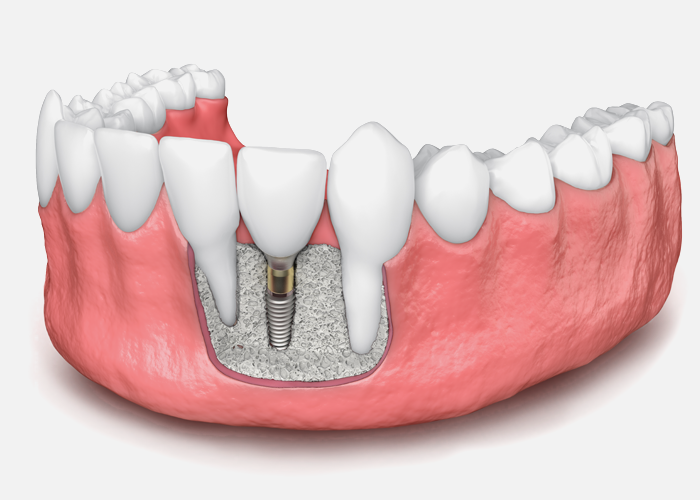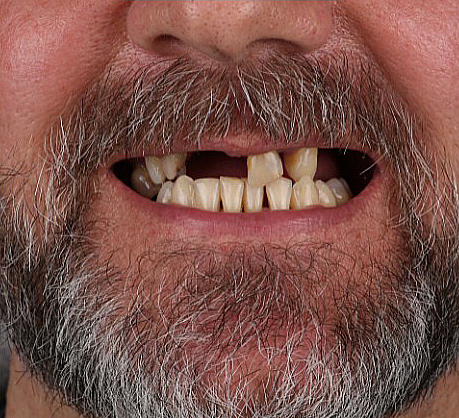In This Article
Introduction:
This is David, and I am a dental implant educator at Chicago Implant Studio. I noticed that our dental implant patients are always curious about and want to know more about “Bone grafting for dental implants”
Regarding dental implants, bone grafting is crucial in ensuring successful and long-lasting outcomes. This procedure provides a solid foundation for implants by augmenting bone volume and density in areas where the natural bone is inadequate. This article will explore the ins and outs of bone grafting for dental implants, its benefits, procedure, recovery, and more.
Why is Bone Grafting for dental implants Necessary?
- Restoring Bone Density: Tooth loss or extraction often leads to bone resorption, causing a decrease in bone volume and density. Bone grafting helps replenish this loss, creating a sturdy base for dental implants.
- Implant Stability: Dental implants require sufficient bone support to integrate securely into the jaw. Bone grafting ensures optimal implant stability, reducing the risk of implant failure.
- Aesthetic Considerations: Bone grafting helps to preserve the natural contour of the jaw and facial structure, enhancing the overall aesthetics of the smile.
Types of Bone Grafts:
- Autografts: In this technique, bone is harvested from the patient’s body, often from the chin, jaw, hip, or tibia. Autografts offer high success rates due to their compatibility and osteogenic properties.
- Allografts: Allografts involve using bone graft material from a human donor, which has been carefully processed and sterilized. This approach eliminates the need for an additional surgical site and reduces patient discomfort.
- Xenografts: Xenografts utilize bone graft material derived from an animal source, typically bovine or porcine. These grafts are safe, and effective, and have been extensively researched for dental applications.
- Synthetic Grafts: Synthetic bone graft materials, such as calcium phosphates or hydroxyapatite, provide an alternative option. They are biocompatible and promote new bone formation over time.
Bone Grafting Procedure:
- Consultation and Evaluation: A comprehensive dental examination and imaging, like X-rays or CT scans, are performed to assess bone volume and quality. Your dentist will determine the most suitable grafting technique based on your specific needs.
- Graft Placement: During the grafting procedure, the selected bone graft material is carefully placed into the deficient area. Your dentist will secure it using screws, membranes, or tissue-stimulating proteins to facilitate new bone growth.
- Healing and Integration: Over time, the bone graft material fuses with the existing bone, a process called osseointegration. This integration provides a strong and stable foundation for the future dental implant.
- Dental Implant Placement: Once the graft has healed and integrated successfully, your dentist will proceed with the dental implant placement, effectively restoring your missing tooth.
Recovery and Aftercare:
- Post-Operative Care: Your dentist will provide detailed instructions on post-operative care, including pain management, oral hygiene practices, dietary restrictions, and follow-up appointments.
- Healing Time: The healing period varies depending on the extent of the bone graft and individual healing capabilities. Generally, it can take several months for the graft to integrate fully before proceeding with implant placement.
Benefits of Bone Grafting for Dental Implants:
- Improved Success Rate: Bone grafting significantly enhances the chances of successful dental implant outcomes by providing a solid bone foundation.
- Restored Function and Aesthetics: Dental implants supported by bone grafts offer improved chewing efficiency, speech, and a natural-looking smile.
- Longevity: A well-executed bone grafting procedure increases the longevity of dental implants, allowing patients to enjoy their benefits for many years.
Conclusion:
Bone grafting for dental implants is a vital procedure that ensures the stability, longevity, and aesthetic success of dental implant treatments. By restoring bone volume and density, bone grafts create a strong foundation for implants, improving overall functionality and appearance. If you’re considering dental implants, consult your dentist to determine if bone grafting is necessary to achieve optimal results. Remember, a healthy and robust bone structure is the key to a beautiful and confident smile.
Meet the Best Dental Implant Surgeon at Chicago Implant Studio.
Chicago Implant Studio is a reputable dental implant clinic in Aurora, Illinois. Find out how dental implants can improve your life and overall health. We offer an international warranty on dental implants for a lifetime. Schedule a free online consultation or call us at (331) 257-7999.






